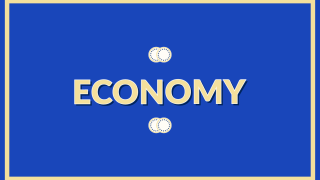The great challenge that authoritarian nations faced in the last several decades was to change the economic and political frame of reference in the world and to transform themselves to achieve the development or, at least, a substantive improvement in the quality of life of their citizens. The dilemma was how engage in liberalization without losing social and political cohesion, and how to maintain that cohesion under economic referents that demand innovation, private investment, systematic growths of productivity, and respect for the capacity of individuals. Very few countries have resolved this well.
Mikhail Gorbachov began by procuring the support of his population resorting to the mechanism that he denominated “glasnost”. His expectation was that public and private discussion (and catharsis) about the past would permit the structural transformation that the economy required to survive and prosper. The so-called “perestroika” consisted of the adoption of market mechanisms to substitute for central planning. In the end, the plan failed: liberalization was not orderly, multiple interests seized the existing assets and the Soviet Empire eventually collapsed.
Carlos Salinas tried the opposite path: economic liberalization to avoid political collapse. The proposal was less ambitious than that of Gorbachov, but his conception was equally intrepid. Economic transformation was sought as a means for resolving problems of growth and revenue but without threatening the political status quo. In contrast to Gorbachov, the PRI survived, but many of the instruments employed for the greatly longed-for transformation entailed the seeds of their own limitations. Privatizations were biased and did not lead, in the majority of cases, to competitive markets at the service of the consumer, and liberalization itself was limited to avoid affecting the interests of the system’s cronies. The poor performance of the economy over the last decades is not the product of chance: it responds to an inadequate plan for liberalization, skewed and unfinished.
China has opted for ignoring the dilemma and its government has devoted itself to organizing the opening, maintaining iron-fisted political control and nourishing its legitimacy with economic growth. The wager of its elite is on that due to its size and millenary culture distinct from the West, it will be able to maintain power in the long term. The literature in this respect is so diverse and contradictory in possible scenarios that only time will tell. But there’s no doubt about one thing: its circumstances are not repeatable in Western nations, thus only a handful of exceptional cases –North Korea, Vietnam, Cuba- have tried it. The coin is in the air.
Spain, Chile and Korea, each under its own circumstances, are nations that opted for breaking with the past and to facing the future. Instead of protecting interests here and there or pretending that what existed could support the transformation that its populations called for from their governors, they decided to change with foresightedness. Each of these countries confronted its own crisis, challenges and conditions but, in the end, the three moved forward. Even with all of their difficulties, none pretends that the past was better.
The present government returns to the old dilemma, but now its focus is equally contradictory. It intends, on the one hand, to correct the errors perceived in the functioning of the markets and, on the other, procures recentralizing the power. Instead of taking the leap ahead to the future by resolving the problems that the past attempt left in its wake, the project is to recreate the old system, although under new parameters. The contradiction is multiple and obvious: compete for investment in international markets but control the private sector at home; declare autonomous entities but attempt to employ them as control instruments; open formerly protected sectors but safeguard the great hunting preserves for prevailing interests. In a word: be modern on the outside but continue being parochial on the inside.
That didn’t work the last time and it will not work now. The country is inserted into the global market but the entirety of the nation has not made the world market its own because innumerable mechanisms persist that impede the markets from functioning, all of which translates into a dual economy that yields dramatically distinct productivities. Some of the obstacles were the product of specific decisions (e.g., the privatizations), but the majority have to do with the unwillingness of allowing the markets to function, which now adds up to the stubbornness of recreating the old-style presidency. What the country requires is a strong government that preserves security and peace, constructs an effective Rule of Law and makes possible, by means of these instruments, the general functioning of the country. Halfway measures won’t be successful now, the same as they weren’t before here or in other countries. The future must be assumed or Mexico will remain behind.
The question is how and where Mexico will end up. Borrowing from Tolstoy his famous axiom that all happy families resemble each other and every unhappy family is unhappy in its own way, the choice lies in confronting the future to construct a modern nation and undertake the costs and requirements of being part of the world’s big leagues (the happy family) or continue to look for excuses for maintaining (and renovating) the old centralized system that thwarts the growth of the economy, the prosperity of the population and the development of the citizenry.






Comments